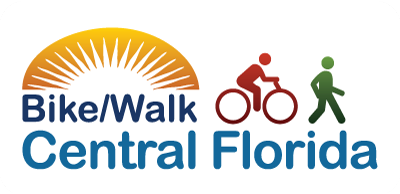 Amanda Day, 43, is the executive director of Bike/Walk Central Florida, a nonprofit that promotes bicycle and pedestrian safety throughout Metro Orlando. Members push to develop and maintain recreational trails and make sure roads are built to accommodate walkers and bicyclists. Day spoke recently with Orlando Sentinel transportation writer Dan Tracy.
Amanda Day, 43, is the executive director of Bike/Walk Central Florida, a nonprofit that promotes bicycle and pedestrian safety throughout Metro Orlando. Members push to develop and maintain recreational trails and make sure roads are built to accommodate walkers and bicyclists. Day spoke recently with Orlando Sentinel transportation writer Dan Tracy.
It seems like a no-brainer that people would bike and walk in Central Florida because of the weather. Yet they don’t. Why?
I wish there was one simple answer. You need to break it up. First of all, it’s the engineering of our roads. They were built post-World War II. It was all about moving cars, not people. There wasn’t a consideration of people who walk and bike. The roads around here tell a story that they are used for cars only, in a majority of the places around here.
Part two is that our culture is built around cars. People aren’t walking to school anymore, biking to school. That can be attributed to anything from working parents and time issues and the perception of safety. There isn’t really just one thing.
Are there different mindsets between walking and biking?
When you are talking about people who are walking, the mindset there is a lot about distance. If you get up in the morning and you want to walk to work, you are not going to want to walk two or three or four miles. You want to walk a couple of blocks to work. If it is anything farther away than a half a mile, you are not going to walk.
So what is your next way to get there? You move up the chain. Is it a bike? You say, ‘I’ll ride my bike.’ But are the streets safe? There’s a perception of safety there. Can I ride on the sidewalk versus the road? How fast are the streets there? What about time? What happens if it rains and you have your bike? Can you get home? There’s so many decision-making points that people are often overwhelmed and they’ll just take their car to make it easy.
Is it going to take a lot of time to get people in Central Florida to walk and bike regularly?
Yes. It took us 30-40 years to get to this place that we are right now. We are hoping it is not going to take us 30-40 years to normalize biking and walking in Central Florida. We are really focused on a program called Best Foot Forward.
Orange County Public Schools is a really important partner in this, as well as the Florida Department of Transportation, the city (Orlando) and (Orange) county. You are looking at two different E’s. From the education standpoint, OCPS has introduced curriculum on pedestrian safety, K through 5. You’re teaching kids it’s safe to walk. It’s easy to walk.
From the engineering standpoint, the cities and the counties and MetroPlan and FDOT are starting to change a lot of the policies and regulations when it comes to street design to be more flexible and allowing for bike lanes, if it’s warranted. We have things called street diets. That’s all part of it and that’s going to take a longer time.
There seems to be a lot of animosity between motorists and cyclists. Why is that?
I wish there was one simple answer. It’s an us-versus-them culture. It is a long-term education process that is occurring and needs to continue.
What about the Coast to Coast (bike path) Connector?
The Coast to Coast Connector is a huge win not only for Central Florida but also for the entire state. It’s one thing to close the gaps and put the concrete down, but the cities and counties need to devote the time and resources for the upkeep of these trails and there are questions about communication and the signage.
Should there be restrooms every 30 miles? How do we make these trails a place where people would want to come and bike with the amenities they are looking for? We need to talk about those types of larger branding and communication issues.
dltracy@tribune.com or 407-420-5444.
Copyright © 2015, Orlando Sentinel

